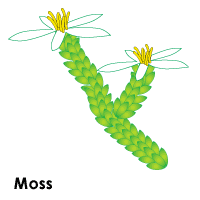Please wait while we process your payment
If you don't see it, please check your spam folder. Sometimes it can end up there.
If you don't see it, please check your spam folder. Sometimes it can end up there.
Please wait while we process your payment
Get instant, ad-free access to our grade-boosting study tools with a 7-day free trial!
Learn more



This site is protected by reCAPTCHA and the Google Privacy Policy and Terms of Service apply.
Create Account
Select Plan
Payment Info
Start 7-Day Free Trial!

Annual
2-49 accounts
$22.49/year + tax
50-99 accounts
$20.99/year + tax
Select Quantity
Price per seat
$29.99 $--.--
Subtotal
$-.--
Want 100 or more? Request a customized plan
You could save over 50%
by choosing an Annual Plan!

SAVE OVER 50%
compared to the monthly price!
| Focused-studying | ||
| PLUS Study Tools | ||
| AP® Test Prep PLUS | ||
| My PLUS Activity | ||
$22.49/month + tax
Save 25%
on 2-49 accounts
$20.99/month + tax
Save 30%
on 50-99 accounts
| Focused-studying | ||
| PLUS Study Tools | ||
| AP® Test Prep PLUS | ||
| My PLUS Activity | ||
No Fear provides access to Shakespeare for students who normally couldn’t (or wouldn’t) read his plays. It’s also a very useful tool when trying to explain Shakespeare’s wordplay!
Erika M.
I tutor high school students in a variety of subjects. Having access to the literature translations helps me to stay informed about the various assignments. Your summaries and translations are invaluable.
Kathy B.
Teaching Shakespeare to today's generation can be challenging. No Fear helps a ton with understanding the crux of the text.
Kay H.
No Fear provides access to Shakespeare for students who normally couldn’t (or wouldn’t) read his plays. It’s also a very useful tool when trying to explain Shakespeare’s wordplay!
Erika M.
I tutor high school students in a variety of subjects. Having access to the literature translations helps me to stay informed about the various assignments. Your summaries and translations are invaluable.
Kathy B.
Teaching Shakespeare to today's generation can be challenging. No Fear helps a ton with understanding the crux of the text.
Kay H.
Create Account
Select Plan
Payment Info
Start 7-Day Free Trial!
You will only be charged after the completion of the 7-day free trial.
If you cancel your account before the free trial is over, you will not be charged.
You will only be charged after the completion of the 7-day free trial. If you cancel your account before the free trial is over, you will not be charged.
Order Summary
Annual
7-day Free Trial
SparkNotes PLUS
$29.99 / year
Annual
Quantity
51
PLUS Group Discount
$29.99 $29.99 / seat
Tax
$0.00
SPARK25
-$1.25
25% Off
Total billed on Nov 7, 2024 after 7-day free trail
$29.99
Total billed
$0.00
Due Today
$0.00
Promo code
This is not a valid promo code
Card Details
By placing your order you agree to our terms of service and privacy policy.
By saving your payment information you allow SparkNotes to charge you for future payments in accordance with their terms.
Powered by stripe
Legal
Google pay.......



Please wait while we process your payment

Sorry, you must enter a valid email address
By entering an email, you agree to our privacy policy.
Please wait while we process your payment

Sorry, you must enter a valid email address
By entering an email, you agree to our privacy policy.
Please wait while we process your payment

Your PLUS subscription has expired
Please wait while we process your payment
Please wait while we process your payment

Bryophytes
Bryophytes, or "moss plants" (the phylum includes both mosses and liverworts), are the most primitive of the terrestrial plants and require a moist environment for their existence. They are smaller than tracheophytes and lack the true stems, leaves, and roots that are found in higher plants. Bryophytes are dependent upon the moisture in their surroundings for both reproduction and fluid transport. The flagellated male gametes of bryophytes, like those of their aquatic ancestors, rely on water to help them move toward female gametes. Additionally, because they lack the efficient system of internal fluid transport found in tracheophytes, bryophytes require environmental moisture to ensure that all parts of the plant remain nourished.
Like all plants, the bryophyte life cycle goes through both haploid (gametophyte) and diploid (sporophyte) stages. The haploid gametophyte comprises the main plant (the green moss or liverwort), while the diploid sporophyte is much smaller and is attached to the gametophyte. The haploid stage, in which a multicellular haploid gametophyte develops from a spore and produces haploid gametes, is the dominant stage in the bryophyte life cycle. This stands in direct contrast to the tracheophyte life cycle, in which the diploid stage is dominant. For more information about the life cycles of bryophytes and tracheophytes, see Alternation of Generations.
Together, mosses and liverworts comprise most of the phylum Bryophyta. Each moss sporophyte consists of a foot, stalk, and sporangium-containing capsule that extends outward from the "leafy" gametophyte plant. These sporophytes are somewhat parasitic toward the adult gametophytes to which they are attached, even though these sporophytes are able to produce much of their own food through photosynthesis.

Liverworts gained their name from the liver-like lobes that characterize some types of these plants. Other types are more moss-like, growing on damp rocks or soil, and others are "leafy" and live on moist tree surfaces. Liverworts, which have a life cycle similar to that of mosses (but with simpler sporophytes), can also reproduce asexually through small structures called gemmae that are formed on the surface of the liverwort leaf. After these gemmae break free from the adult plant, they can give rise to new gametophytes on their own.

Please wait while we process your payment





